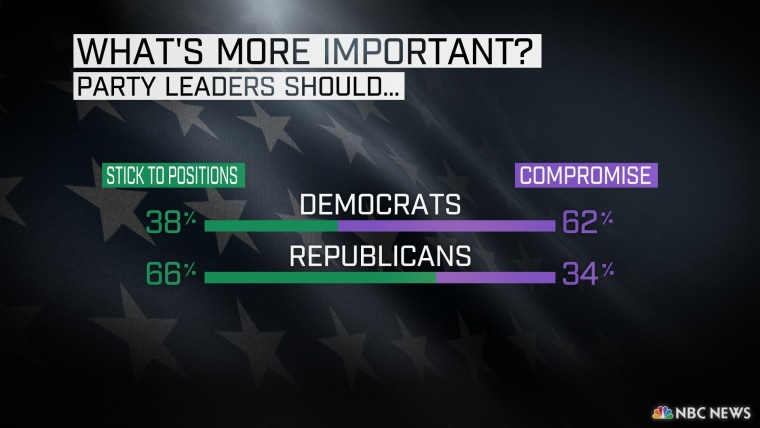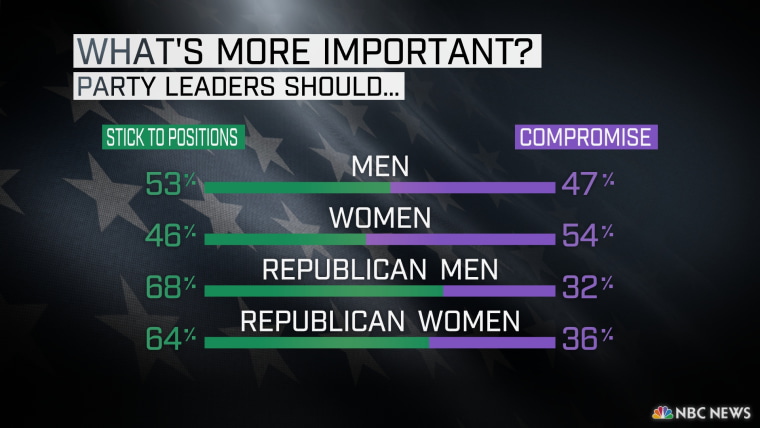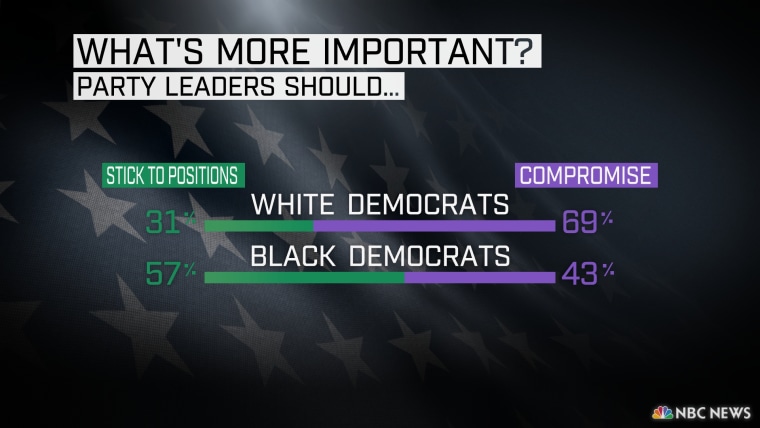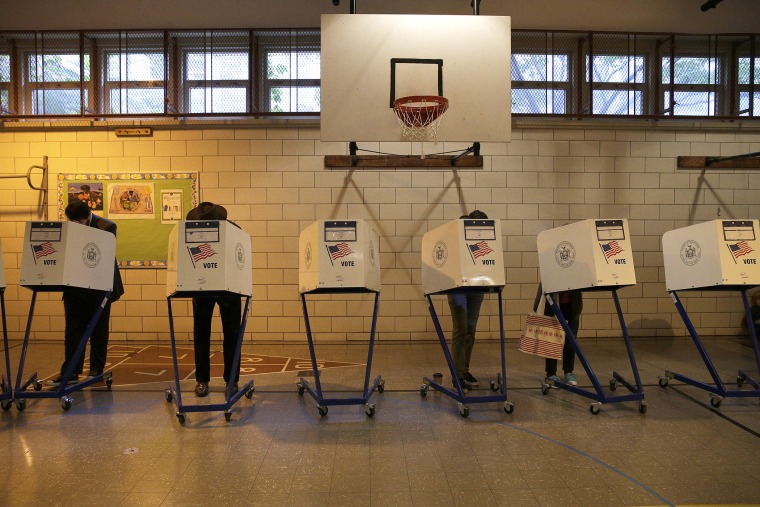What is the lesson of the 2014 election and what does it portend about gridlock for the next two years?
Based on 10,842 responses to online interviews conducted by NBC News through SurveyMonkey in the two days following Election Day, we can characterize the mood of the country and what it suggests, both about what we may observe over the next two years, and in the soon-to-convene 114th Congress.
Overall, the public is evenly split on whether it wants members of Congress to compromise or to stick to their positions -- a deep division that has important implications for understanding Congress’ mandate to act, and also for thinking about how the next two years may affect the mood of voters in 2016.
When asked whether voters wanted their members of Congress to “stick to their positions” or “compromise across lines,” nearly an equal number of voters said that they sent their members to Congress to try to break the current stalemate, and that they wanted their members to stick to their partisan positions. Nearly half of voters with an opinion wanted their member to reach across the aisle in an attempt to get things done, and about half wanted their members to not compromise.

That sentiment, however, is not equally shared among various groups in the electorate, and important differences emerge when we use the vast amount of data to dig deeper into how that opinion varies.
Among the 32% of the sample who identified as Democrats, nearly 62% wanted their members of Congress to work with Republicans. Among the 32% of the sample who called themselves a Republican, that percentage was only 34% -- 66% of the Republican voters polled wanted their members to stick to their positions rather than compromise with Democrats.
This stark difference is important because while Democrats want Congress to work together to get things done, the vast majority of Republicans do not. So, if the Republicans in the House and Senate listen to their base, we will see two more years of gridlock and a hardening of partisan positions.The appeal of continued gridlock among the Republican base could have consequences for what happens in 2016. Independents, who make up 25% of the sample, are typically swing-voters in close elections. Unlike Republican partisans, most Independents who lean Republican (54%) favor compromise. If the Republican majorities listen too closely to their base, and choose gridlock over compromise, they risk alienating Independent voters who could be critical in the 2016 election.
Looking beyond party-based divisions reveals other interesting insights into opinion cleavages in the electorate.
There is a slight gender gap, for example, with a majority of men preferring gridlock to compromise, while a majority of women prefer compromise to gridlock, but this difference is largely a result of partisan differences. Among Republican men and women, the differences are much smaller as a higher percentage of both prefer that their representatives stick to their positions rather than comprise with Democrats.

There are clear differences in the Democratic party, however. In particular, the opinions of white and black Democrats differ dramatically – whereas 69% of white Democrats prefer comprise, nearly 57% of black Democrats want their representatives to stick to their positions. Navigating this racial divide will be important for Democrats who are increasingly reliant on the mobilization of minority voters.

Note: Results are based on a survey conducted on Nov. 5 and 6, 2014 among U.S. adults. The survey was fielded by SurveyMonkey using questions from NBC News. Respondents were selected after answering one of the nearly 3 million user-created surveys running each day on the platform. The bootstrapped confidence interval of +/- two percentage points accounts for the variability of the estimated proportions in the sampled population as well as the impact of the statistical weighting used to make the sample statistically representative in terms of age, sex, race, education and region based on the U.S. Census Bureau’s American Community Survey.Dr. Josh Clinton is Professor of Political Science at Vanderbilt University and a Senior Election Analyst at NBC News; Jon Cohen is VP of Survey Research at SurveyMonkey. Dr. John Lapinski is Director of Elections at NBC News and the Director of Penn’s Program on Opinion Research and Election Studies and Associate Professor of Political Science.
